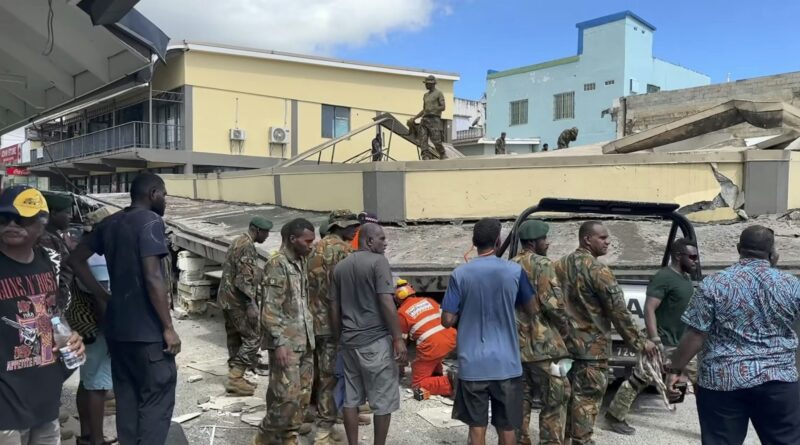Why Vanuatu should brace for even more aftershocks after this week’s deadly quakes: a seismologist explains
The death toll from Vanuatu’s earthquake disaster continues to rise, with international search and rescue operations underway to help people hit by the initial quake and its aftershocks.
On Tuesday afternoon, a powerful earthquake struck 30 kilometres off the west coast of Efate, the main island of Vanuatu. At a magnitude of 7.2 and a depth of just 50km, the earthquake damaged many buildings and injured dozens of people in Port Vila, the Pacific nation’s capital.
Since then, there have been numerous aftershocks at nearly the same location, including a magnitude 5.5 this morning, further adding to the devastation and injuries.
Based on previous experience, here’s what we might see next.
How long could the aftershocks continue?
At 7.2 magnitude, yesterday’s quake is considered a major earthquake.
The several aftershocks of magnitude 5 in the same area are typical of an aftershock sequence – the series of smaller earthquakes that tend to follow the large one, known as the mainshock.
In fact, for this particular earthquake at a magnitude over 7, we would expect at least a few aftershocks in the range of magnitude 6 as well. In a typical aftershock sequence, there would be ten times as many aftershocks in the magnitude 5 range, and ten times as many again in magnitude 4, and so on.
This pattern can continue for weeks to several months, or even longer, with the magnitude and frequency of earthquakes typically diminishing with time.
Could a bigger earthquake still occur?
There is a very small chance that an earthquake bigger than yesterday’s 7.2 might still occur. In this case, yesterday’s earthquake would have been a “foreshock” – a smaller earthquake preceding a larger one.
However, this is not very common. Only in about 5% of cases will a major earthquake of such magnitude be a foreshock to an ever larger one.
Does the Ring of Fire have anything to do with this?
Vanuatu sits within the Ring of Fire – a belt of tectonic activity that surrounds the Pacific Ocean, thanks to a series of plate boundaries around the Pacific plate.
Its name comes from the volcanoes associated with subduction along the margins. Subduction is when one tectonic plate is pulled beneath another.
The Pacific plate and the Australian plate meet to the immediate west of Vanuatu. The Australian Plate is being subducted – it dives beneath the Pacific plate at a rate of about 80 to 90 millimetres a year, which makes it quite a fast-moving plate boundary.
The Solomon Islands, Fiji and Tonga are also on this plate boundary, as is New Zealand to the south.
In regions prone to earthquakes due to subduction, it’s possible to have earthquakes above magnitude 8. However, there are none above this magnitude in historical records for the region of Vanuatu.
While yesterday’s earthquake will continue to produce aftershocks, these will occur in the vicinity of the mainshock.
Of course, earthquakes elsewhere on the plate boundary are always possible, but these distant events won’t be as a result of yesterday’s earthquake.

How often do earthquakes hit Vanuatu?
Earthquakes are common in Vanuatu, due to the aforementioned Ring of Fire. Since 1990, there have been 11 earthquakes with a magnitude greater than 7 within 200km of yesterday’s event.
In 2010, a 7.5 magnitude quake struck just 40km from Port Vila at a depth of 35km, generating a small tsunami. However, no deaths or injuries were reported.
The last time an earthquake sequence had a significant death toll in Vanuatu was in November 1999, when a shallow quake of magnitude 7.5 occurred off the coast of the volcanic island Ambrym, triggering a tsunami.
At this particular plate boundary, earthquakes can be as deep as 300km or so. The deeper the earthquake, the less damage it’s going to cause, because it’s further away from the surface and therefore causes weaker shaking.
That’s another reason why yesterday’s earthquake near Port Vila was so damaging – it was reasonably shallow for a plate boundary region, and produced very strong ground shaking.

